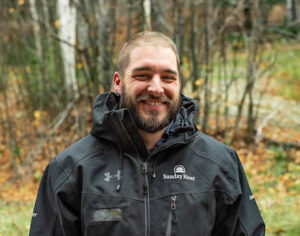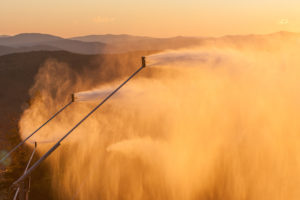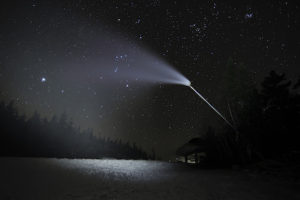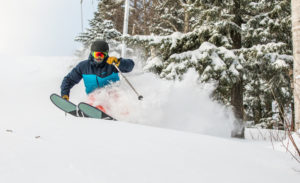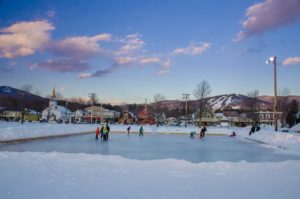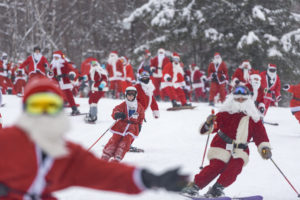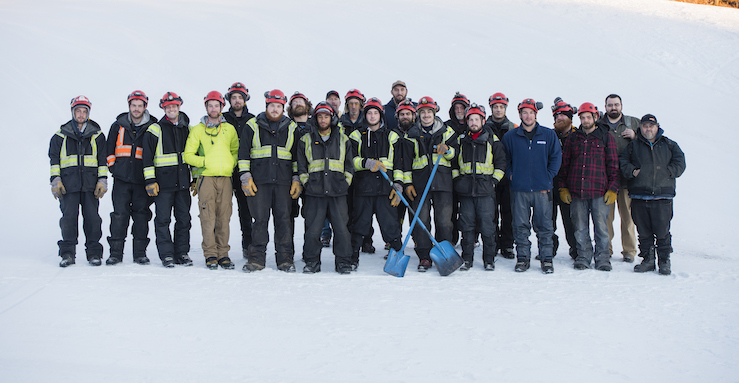
In and around Sunday River, snowmakers are revered. It’s one of the perks of the job, but it’s a hard-earned perk, says the resort’s snowmaking operations manager and energy manager, Drew Parent. “They step foot in any bar in Bethel, and they’re greeted like heroes,” he says.
Parent would know. He started working as an operator in Sunday River’s control room in 2012, running the snowmaking pumps and air compressors.
He quickly became snowmaking supervisor, managing the second shift (3-11 p.m.) before taking over as supervisor of the snowmaking maintenance and control room in 2014, and then taking on the added responsibility as energy manager in 2017.
It’s a lot to manage. Sunday River’s snowmaking capacity has doubled in the past two years alone thanks to massive upgrades, including nearly two miles of high-pressure pipe leading from the Sunday River, installation of a 600-horsepower pump and four 500-horsepower pumps, along with new HKD guns and KLIK hydrants to expand automation.
